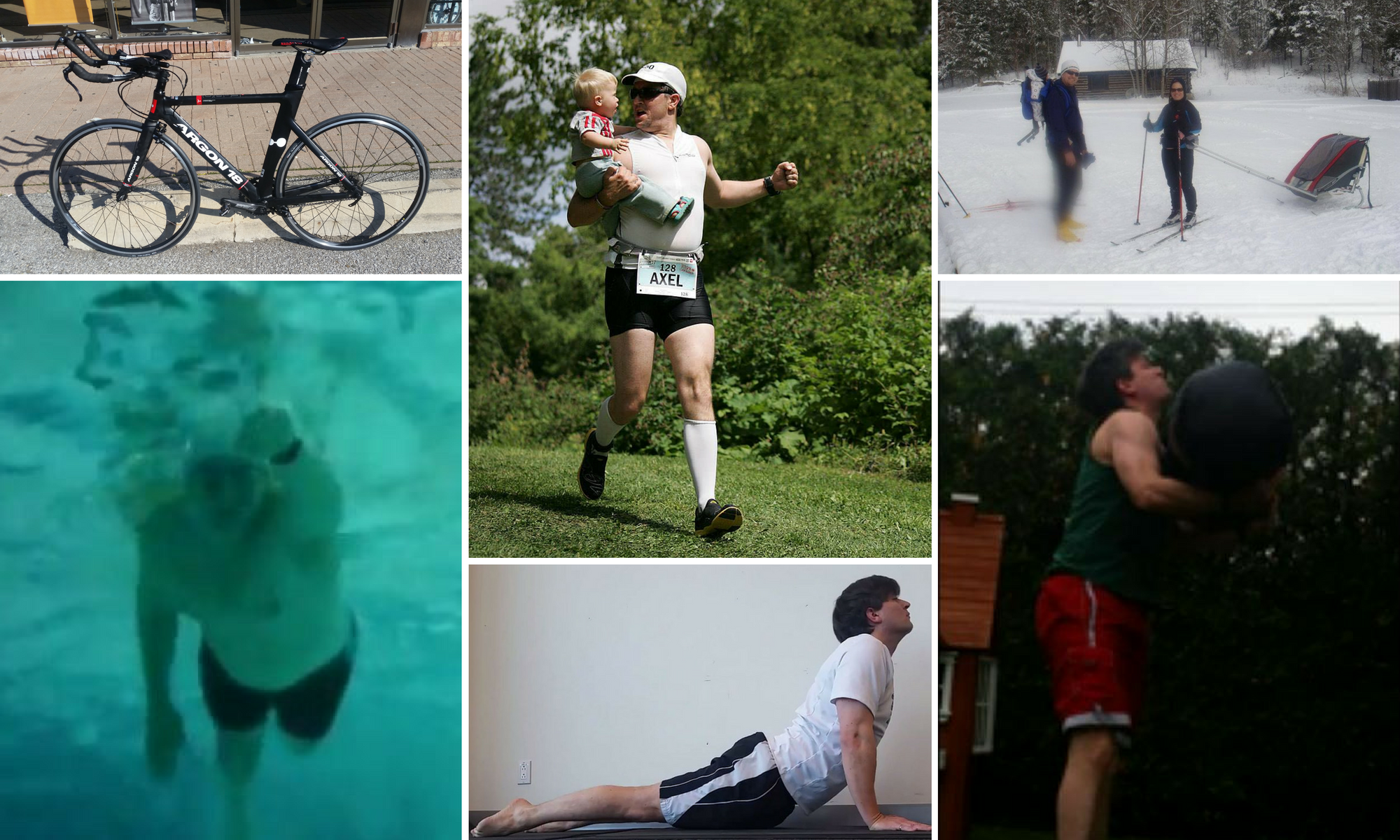This post is going to be a bit of a rave again. I’m going to talk about the Flexible Warrior Yoga for Triathletes DVD series. I don’t get any compensation for this review, and I purchased these products myself.
You’re already having to fit in time to swim, bike and run. Then there are bricks to consider, and if you’re really good you have some strength cross-training in there. Maybe you even work in transition skills, or emergency bike repair practice (I haven’t done that last one). And now you’re supposed to fit in Yoga?!?!
Yes! And here’s why:
- Stretching. You have to do this anyway, you might as well do it through proven, Eastern, thousand year old techniques.
- Strength. Done right, a Yoga workout can be a strength workout only more functional than lifting weights or using machines. Holding a pose is more about muscular endurance than raw power and that’s very important to the endurance athlete.
- Balance and core. These can be a little weak in endurance athletes so it’s good to shore them up, especially for…
- Injury Prevention. When you get injured, you can’t train, so given that Yoga is a low impact form of cross-training, time spent doing it is like an insurance policy. When I get those little aches and pains, I find it really helps to do a little Yoga.
- Days off. It can be inclement weather, the aforementioned aches and pains (or even injury) or even just the chaos of everyday life that keeps you from getting outside and working out. When that happens, having a Yoga DVD handy and knowing it will do you some good can take the edge off the disappointment you feel at having to scrap the original workout.
This DVD series is created and hosted by Karen Dubs. Karen has a lot of familiarity with endurance athletes (stemming from, I believe, an affiliation with Spinnervals’ Troy Jacobsen) and it shows in the videos. The people demonstrating are triathletes of a variety of levels, the sequences are designed to address the issues that triathletes have, and she even forgives athlete’s for the tight calves, hamstrings and hips that might keep them from perfect technique. Karen’s instructions are clear in illustrating what’s important to the technique, while her laid-back attitude keeps you from getting frustrated by any mistakes you might make (e.g. “As long as you’re breathing, I’m happy”).
Volume 1 has 3 different workouts or sequences, each lasting 20-25 minutes. They are titled: Energy, Power, and Flexibility. They can be performed in that order if you have about an hour to devote to your Yoga workout, or you can do them separately.
Energy is a sequence that can be used as a full body warm up before the other sequences or even other workouts. It also includes some core work. The beauty of this one is that it can be performed when your muscles and joints are cold, i.e. first thing in the morning. You don’t need a warm up – it is the warm up! I can tell you that it does indeed energize you and makes it easier to start your day.
The Power sequence may be the most challenging; it certainly is for me, especially since I seem to get the least opportunities to practice it – which is a shame, as some of the poses involve technique and balance that need to improve through practice. You need to be warmed up to perform it, but when you get through, you’ve broken a real sweat and know you’ve had a workout.
I like to use the Flexibility sequence as a post-workout stretch session when I have the time. This is the reason Power is the least used: I can do Energy first thing in the morning, and Flexibility post-workout, but Power needs its own timeslot to be a workout unto itself. The Flexibility sequences poses stretch all the important ones for triathletes, notably opening up the hips, elongating the hamstrings and calves.
I also own Volume 2 of the Flexible Warrior series. I’ve spent less time with it, so I have less to say about it. This one has shorter sequences, but more of them, with slightly tweaked goals. Energy is similar to Volume 1’s version (warm-up). I’ll make you guess which muscles the Core sequences is designed to address. The Cross-train sequence is for “total body strength, stability, and endurance for upper and lower body”, while the Balance and Recovery replaces the Volume 1 Flexibility routine, albeit with more technical poses that work on your balance.
If you’re looking for a small sample of how Yoga can help your triathlon training here’s a link to the article that orignally got my attention. I have that sequence pretty much memorized, and use it as my bare minimum post run/ride stretch routine. There is even a Flexible Warrior YouTube channel.
An honourable mention goes to Sage Rountree who also does Yoga for Endurance Athletes.








